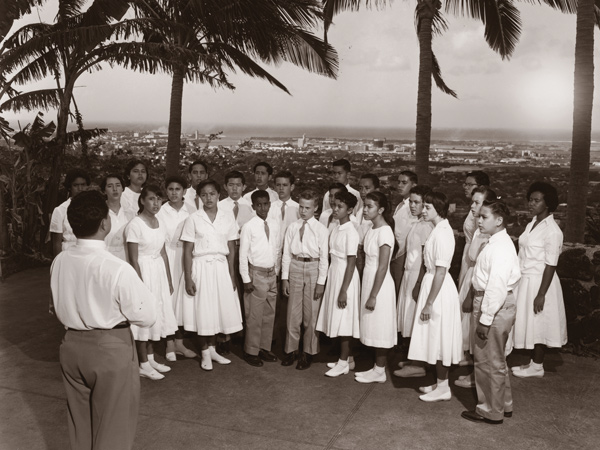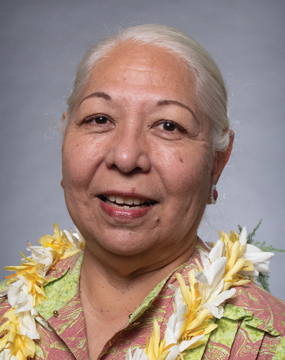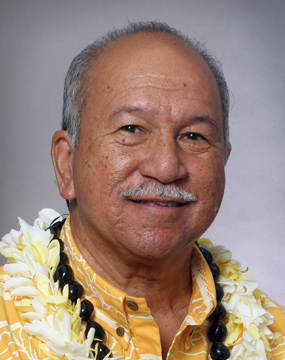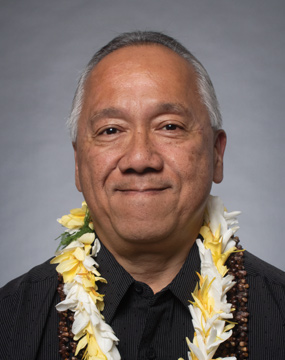- KS Kapālama Map and hours (808) 842-8211
102ND ANNUAL KAMEHAMEHA SCHOOLS SONG CONTEST

Live broadcast
Friday, March 11 on K5
Preshow 7pm | Competition 7:30pm
Encore presentations of the preshow and competition
Friday, March 18 | 7pm on KGMB
Sunday, March 20 | 2pm on KHNL
Louise Aoe McGregor Award
Outstanding Student Director
Winner: (TIE) Selah Fronda (sophomore girls) and Chase Kamikawa (senior co-ed)
Richard Lyman, Jr. Trophy
‘Ōlelo Makuahine Award
Winner: Men of the Class of 2022 (senior boys)
George Alanson Andrus Cup
Boys’ Competition Award
Winner: Class of 2022 (Seniors), Kīwa‘a Hermosura (song director)
New England Mothers’ Cup
Girls’ Competition Award
Winner: Class of 2022 (Seniors), Mālie Lyman (song director)
Helen Desha Beamer Award
Best Musical Performance
Winner: Men of the Class of 2022 (senior boys)
Charles E. King Cup
Combined Class Award
Winner: Class of 2022 (Seniors), Chase Kamikawa (song director)
7:30 PM - 10:00 PM

Oli Ho‘okipa
Pule
Ho‘onani I Ka Makua Mau
Hawai‘i Pono‘ī
‘Ōlelo Ho‘okipa
Ka Ho‘okūkū A Nā Wāhine
Girls' Competition
Ka Ho‘okūkū A Nā Kāne
Boys' Competition
KA HO‘okūkū A Nā Papa
Combined Class Competition
Nā Papa I Hui Pū ‘Ia
Combined Classes
Ka Hā‘Awi Makana
Presentation of Awards
Ka Hīmeni Kula
Alma Mater
Ka Waiho‘Olu‘u O Nā Papa
Papa 12: ‘ula‘ula; Papa 11: melemele; Papa 10: ‘ōma‘oma‘o; Papa 9: poni

For over a century, the Kamehameha Schools Song Contest has featured the very best of students’ artistic expression through Hawaiian choral singing while strengthening school spirit and celebrating cultural pride. But what does it take to maintain Kamehameha’s a cappella choral tradition? As we deal with changes in our way of life and disruptions to our traditional practices, we reflect with humility and gratitude on the earlier generations of music teachers, composers, and arrangers who laid a solid foundation of classic repertoire, time-honored arrangements, and choral singing excellence ensuring that our 102-year-old Song Contest legacy lives on – Ola Mau ‘o Kamehameha!
Tonight’s program is dedicated to the early music educators who laid the foundation for our beloved Song Contest choral tradition.

Charles E. King, graduate of the first class of Kamehameha School for Boys in 1891, distinguished himself as a prolific composer of some of Hawai‘i's most beloved mele. When his two famous anthologies were published in the early 20th century, “Hawaiian Melodies” and “Songs of Hawai‘i” – known as the “blue and green books” respectively – his compositions, along with those of the royal composers and other turn of the century song writers, became the gold standard for Kamehameha Schools choral singing and in particular, the Song Contest. Elder graduates from the 1940s still recall being taught by King, and his music remains a cornerstone of the century-old tradition. Today, as we pore over the hundreds of choral arrangements in the music files at Kamehameha Schools Kapālama, we see the names of revered teachers who have inspired young singers and pushed them to the highest levels of musicmaking.

Laura E. Brown’s arrangements throughout her time at Kamehameha from 1926 to 1947 reveal an intimate understanding of young female voices and how to keep them buoyant and angelic in the upper register.

During Frank P. Kernohan’s tenure from 1935 to 1952, his simple, straight-forward arrangements of old favorites helped to popularize and expand the Hawaiian repertoire at the Boys School.

Harold B. Turney’s arrival in 1950 marked the beginning of what some call Kamehameha’s “golden age of music.” As a choral director he was able to harness the virile quality of developing male voices, and his arrangements for both male and female chorus highlighted with great effect the unusually rich and full-bodied blend of Kamehameha’s remarkable adolescent singers.

Walter Tullis’s arrangements during his brief stay from 1950 to 1951 showed a zeal for close harmonies and complicated chromatic movements that would surely keep professional singers on their toes, and yet were routinely delivered with seemingly little effort as part of the song competition.

Martha Poepoe Hohu, class of 1925, came from a musical family associated with Kaumakapili Church where her father, Rev. Henry Poepoe, was pastor. As a member of the Kamehameha faculty from 1932 to 1957, she leaned on her early training as a church accompanist and her upbringing in traditional hīmeni which made her arrangements uncomplicated and very singable.

Her daughter, “Aunty Leila” Hohu Kiaha of the class of 1944, followed in her mother’s footsteps as both accompanist and arranger. Fond of “call and response” motifs between bass and treble, and a stickler for prominent melody lines in her arrangements, Aunty Leila’s no-nonsense rehearsal technique and tough-love teaching style endeared her to hundreds of students for many decades.

Dorothy Kahananui Gillett, a 1936 graduate, taught at Kamehameha from 1943 to 1957. Over that time, her strong technical training would bring her shoulder to shoulder with the revered Harold Turney resulting in one of the great classic male chorus arrangements in Kamehameha’s choral tradition. Gillett adapted a traditional chant to a choral setting which featured a warrior-like unison and mysterious dynamic shading as a dramatic prelude to Turney’s warm and sonorous rendition of the iconic, “Hole Waimea.” A prolific arranger, Gillett would produce some of the most creative and sophisticated choral interpretations for male, female, and mixed chorus adding significantly to the body of literature for the Song Contest.

In 1959, Robert Springer came to Kamehameha to head the Music Department at the Boys School. As director of the Boys Concert Glee Club, he was a serious choral clinician who helped singers hone their skills through discipline and technique. In 1963, Dale Noble was hired to direct the Girls Concert Glee Club, and when Springer went on sabbatical in 1966, Noble became the director of the Boys Concert Glee Club, a position he held for many years.

Then in 1965, Robert Nelson came to Kamehameha to direct the Girls Concert Glee Club. Nelson stressed the importance of balance and finesse and was especially adept at producing rich sounds in female voices.

Dale Noble is fondly remembered as a patient, kindhearted teacher whose knowledge and experience in choral music was far greater than his humble demeanor let on. He emphasized blend and taught students how to listen by developing a discerning ear for bright intonation and the shaping of warm round tones that ring with higher overtones when perfectly in tune. He exposed students to a wide range of choral literature while maintaining excellence in classical Hawaiian choral repertoire. He oversaw the running of the Song Contest and coached many song leaders over his storied 32-year career at Kamehameha.

The youngest of the choral educators to be lauded this evening is a 1963 graduate of the Kamehameha School for Girls. After intense training in opera and choral conducting at the prestigious Ithaca College of Music in New York, Zillah Pua‘ala Young was a rising star on a world stage having recorded as a mezzo soprano soloist under world-renowned composer Igor Stravinsky. Her desire to uplift young singers in Hawai‘i drew her back home where she served as the Girls Concert Glee director at Kamehameha. While she was still in her 20s, she distinguished herself as the youngest person ever selected to lead the Hawai‘i Opera Chorus and the Honolulu Symphony Chorus. In 1977, Young brought the boys and girls concert glee clubs together to form a combined Concert Glee Club. Her choral teaching focused on support, posture, technique, and rigor, and her spirited arrangement of “Kūhiō Bay” garnered the first-ever freshmen co-ed victory in Song Contest history. Her popularity among the students made her untimely passing at the age of 33 particularly heartbreaking – and yet it is gratifying to know that her epic contributions to Hawai‘i’s choral heritage, like those of her predecessors, are forever a part of our vibrant living legacy of song.
MUSIC

Timothy Keali‘i Ho is the chair of the Music Department and the director of choirs at the Horace Mann School in New York City. He holds bachelor’s degrees in musical arts and music education from Pacific Lutheran University, as well as a Master of Arts degree in ethnomusicology from the University of Hawai‘i at Mānoa. His master’s studies focused on the evolution of Kamehameha’s choral singing and arranging tradition. Mr. Ho served as the choral director at Kamehameha Kapālama from 1997 to 2005. He is a graduate of Kamehameha Schools, class of 1991.

Nola A. Nahulu is the choral director for the Kawaiaha‘o Church Choir, Hawai‘i Opera Theatre Chorus, Hawai‘i Youth Opera Chorus, and the Pearl Harbor Hawaiian Civic Club. She is also a lecturer in Hawaiian Choral Music at the University of Hawai‘i at Mānoa, Music Department. Ms. Nahulu is the founder and artistic director of the choral group Kawaiolaonāpūkanileo, whose mission is to perpetuate and promote Hawaiian choral literature. She is a graduate of Kamehameha Schools, class of 1971.
HAWAIIAN LANGUAGE

Leonard F. Ke‘ala Kwan, Jr. is a lifelong kumu ‘ōlelo Hawai‘i. He currently serves as the director of Cultural Development for the Kamehameha Schools Ho‘okahua – Cultural Vibrancy Group. He is a proud graduate of Nānākuli High and Intermediate School’s first graduating class, the class of 1972. As a lifelong kumu ‘ōlelo Hawai‘i, Kumu Kwan served as the Languages Department head at Kamehameha Kapālama High School for two decades and dedicated 25 years to Kamehameha’s Ho‘omāka‘ika‘i – Explorations summer program, including 22 years as its coordinator. He resides on the Wai‘anae Coast with his ‘ohana, enjoys Hawaiian music and spending time with ‘ohana.

Hailama Farden has served Kamehameha for 30 years as a kumu ‘ōlelo Hawai‘i, high school vice-principal, and is currently a community strategist with KS’ Strategies and Transformation Group. He is the president of the Association of Hawaiian Civic Clubs, serves on many community organizations throughout Hawai‘i, and is kahu of Wai‘anae Protestant Church. Kumu Hailama is also an accomplished haku mele, recording artist, producer, and an emcee with Tihati Productions. He is a graduate of Kamehameha Schools, class of 1989.
OVERALL

Dr. Randie Kamuela Fong is the executive culture officer and managing director of the Ho‘okahua Cultural Vibrancy Group at Kamehameha Schools. His academic background includes music, Pacific Islands studies, and educational leadership. From 1985 to 2005, Dr. Fong served as the department head of Performing Arts at Kamehameha Schools Kapālama, where he oversaw music, dance, drama, the Concert Glee Club, and special events. He has also contributed his many talents to Song Contest over the years as music teacher, choral arranger, pre-show producer, and Hō‘ike creative director. Dr. Fong leads ‘Aha Moananuiākea, a consortium committed to Hawai‘i’s cultural, educational, and environmental engagement with indigenous communities throughout the Pacific. He is a graduate of Kamehameha Schools, class of 1978.
The Song Contest is unique to Kamehameha – a tradition that has involved all students in musical competition for 102 years. Miss Laura Brown, director of music at Kamehameha from 1926 to 1947, stated that "the objectives of the song contest are to build up the repertoire of the best in Hawaiian music for the cultural heritage of any student who attends Kamehameha; to develop leadership, cooperation and good class spirit; and to give students the use of their singing voices and to give them pleasure in singing as a means of expression.”
The first song contest for male students was held at the School for Boys in 1921. A cup named for George Alanson Andrus, a former director of music at Kamehameha School for Boys whose life inspired the idea of an annual song contest, was offered as an incentive in the competition.
The year 1922 marked the first time that both the Kamehameha boys and girls held song contests. Mrs. E. G. Scoville, a visitor to the Islands from Watertown, Connecticut, was so impressed with the singing of the Kamehameha girls that she donated the New England Mothers’ Cup for the School for Girls competition.
In 1967, an additional trophy was offered by the Trustees in honor of Charles Edward King, an 1891 graduate of the School for Boys. The trophy is awarded to the class winning the combined class competition.
The Louise Aoe McGregor Award, named for a member of the first graduating class of the School for Girls in 1897, was first presented in 1972. It recognizes the student director who has made the most significant contribution to the class in organizational ability, leadership, assistance to others, and persistence.
The Richard Lyman, Jr. ‘Ōlelo Makuahine (Mother Language) Award recognizes excellence in the use of the Hawaiian language within a song. Lyman, a Kamehameha Schools trustee from 1959 to 1988, was keenly interested in the preservation of Hawaiian language and culture.
The Helen Desha Beamer Award recognizes the best musical performance. Donated by the Kamehameha Alumni Association, the award honors the substantial contributions of Helen Desha Beamer to the lexicon of Hawaiian music. Beamer was a 1900 graduate of the Kamehameha School for Girls.
In the early years, the girls’ song contest was held in front of the Assembly Hall, and the boys had their contest in front of Bishop Hall. When the School for Girls campus on Kapālama Heights was completed in 1931, separate contests for boys and girls were held in the auditorium. In 1952, the first combined contest of the School for Girls and School for Boys Senior Division took place in Kekūhaupi‘o, the newly constructed fieldhouse. The song contest moved to the Neal Blaisdell Center in 1964 and has been attended by capacity crowds there since then. A highlight of the evening is the Hō‘ike, a show to entertain and inform the audience while the judges’ score sheets are tallied. The Hō‘ike is an exhibition of the beauty of Hawaiian mele and hula.
Help musicians continue their educational journeys
Read about Taisamasama Kaiminaauao-Eteuati KSKʻ20 and how scholarships made by generous donors to the Pauahi Foundation helped turn his hard work and dedication into a way to pursue his passion for music. Please consider donating to help alumni like him.